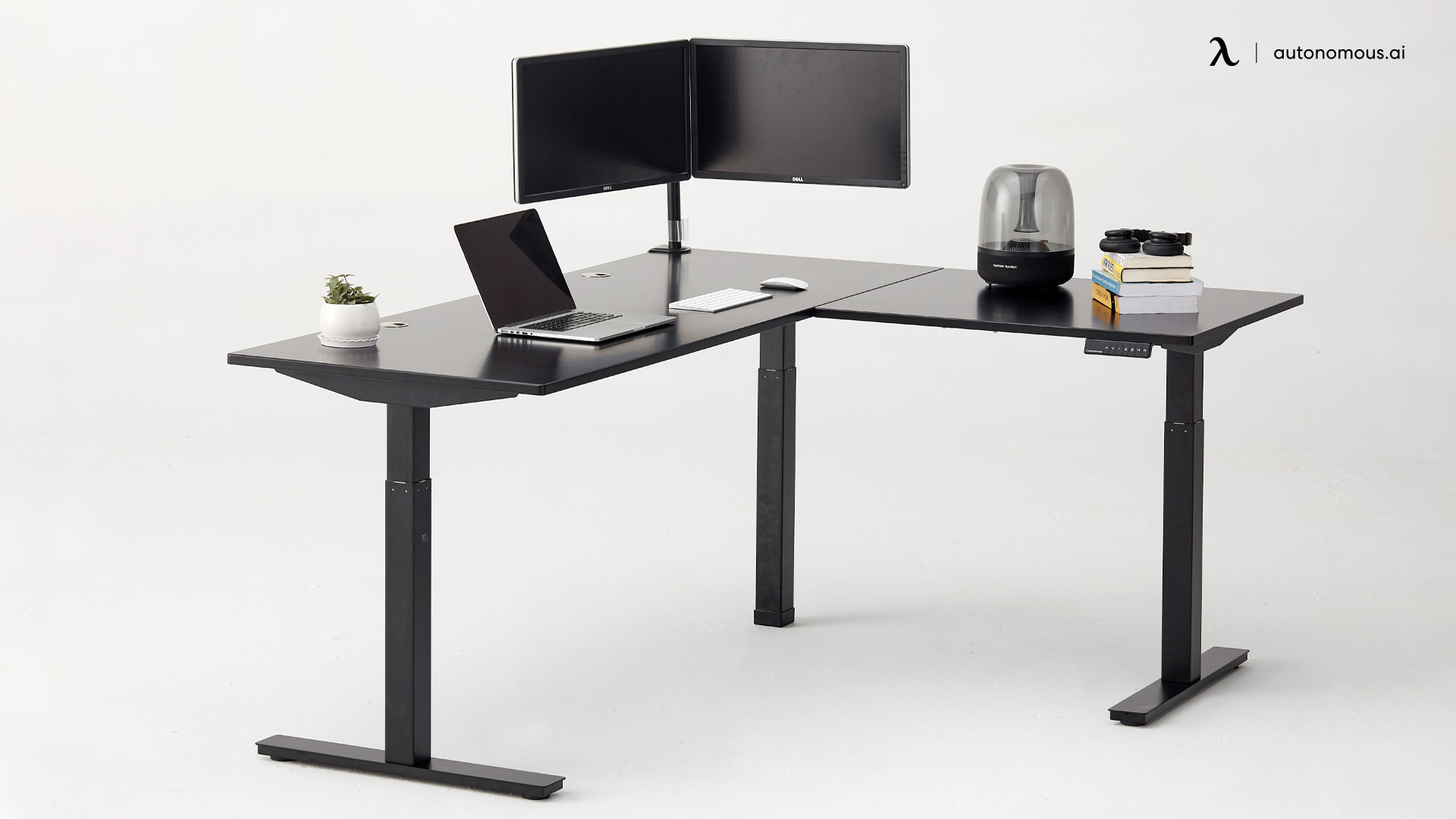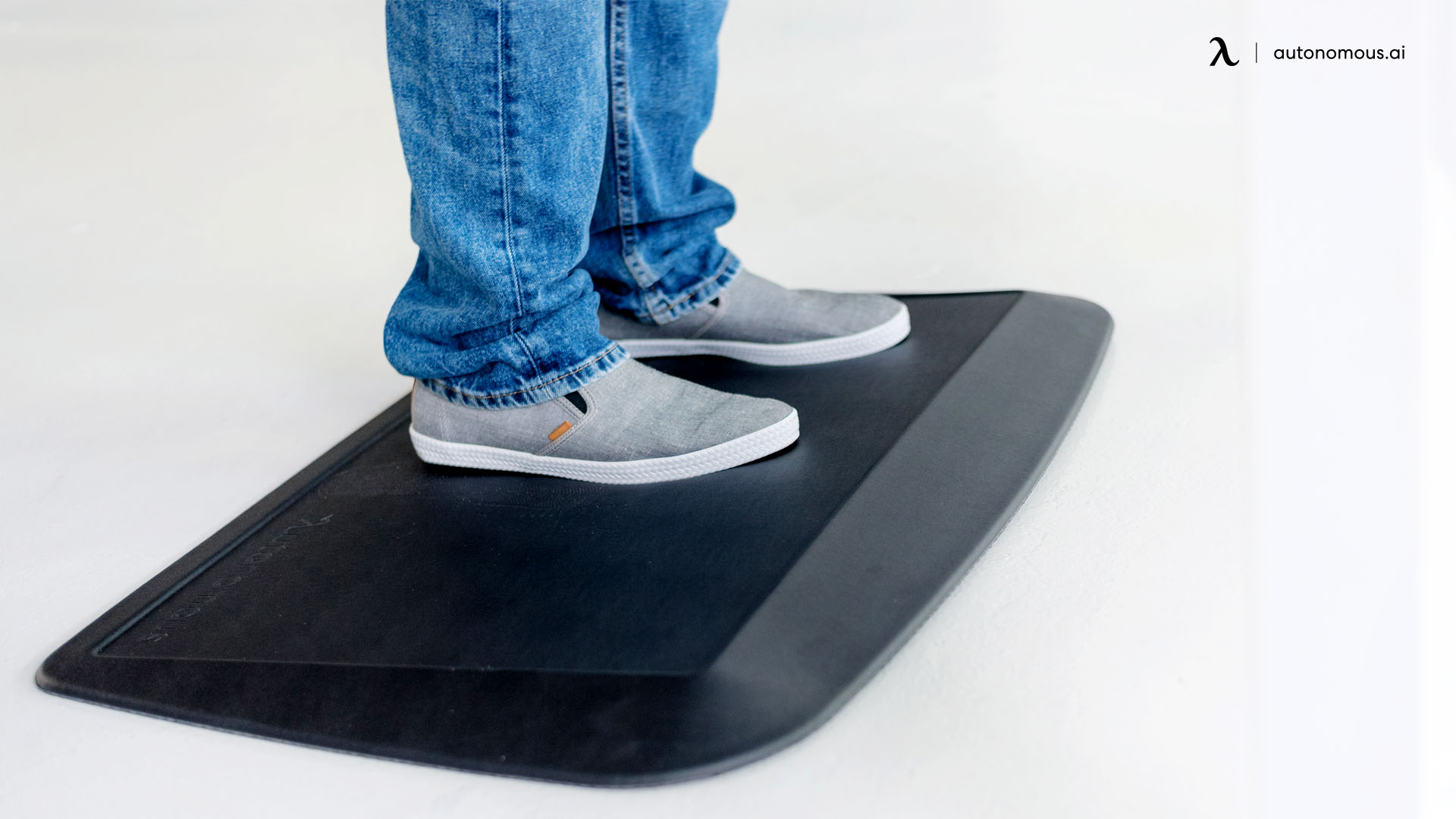
As office-goers, it's easier than ever to get into a sedentary routine when it comes to working. Sitting at the same desk for hours and staring at the computer monitor can be extremely tiring, both mentally and physically. That's why it's important to make sure your body is getting the movement it needs to stay healthy and alert.
A great way to do this is by standing at work. This can burn calories, improve focus and concentration, and promote better posture. However, starting a new routine can be daunting, so why not give yourself a 30-day challenge to start standing at work?
By the end of the challenge, you may very well discover that standing has become an integral and enjoyable part of your work routine. You may even wonder how you managed to do your job without standing at some point during the day!
Remember to consult a professional if you experience pain or discomfort while standing or transitioning.
What Is the Standing-at-Work Challenge?
Sitting for an extended period of time at work has been linked to various health issues, such as obesity, cardiovascular disease, and back pain. To address these health concerns, the “Standing-at-work Challenge” was created. It is open to anyone who works at any kind of workstation, either in their home or in the office.
The challenge involves making a commitment to stay at their standing workstation for a specific length of time, such as 15 minutes every hour. This can be adjusted to the individual and their needs, but the idea is to remain standing at all times while working.
Standing for work does have its benefits. It has been found to improve core strength and reduce aches and pains in the neck, lower back, and shoulder area. Plus, standing desks force users to move, which can help burn calories and make the challenge more exciting.
What Should You Stand on During the Standing-at-work Challenge?
With the right equipment, standing at work all day can do wonders for your physical and mental well-being.
Standing Desk
The traditional desk setup isn't always ideal; it can lead to poor posture, sore muscles, and overall discomfort. However, did you know you can burn calories with a standing desk and combat all the above-mentioned issues too?
Not only is standing better than sitting, but it also allows you to maintain an upright posture, which reduces the strain on your back and shoulders. Additionally, lifting your head and standing up now and then can help with digestion, focus, and productivity.
When looking for a standing desk, you want one that is easily adjustable and provides support. The best home office desk will come with adjustable features that allow users to change the height and angle of the model.
In this case, the L-shaped electric desk by Autonomous is an innovative product that automatically adjusts to various positions. It also comes with a lot of surface space to organize your workstation neatly.
This way, you can find the perfect height and angle suited to your specific body type and posture. Furthermore, it's good to opt for desks built with solid and stable materials like wood or steel.
|
Anti-Fatigue Mat
To ensure that you safely stand at work and maximize the potential benefits of a standing desk, the first thing you should consider is the type of mat required. An anti-fatigue mat is crucial as it helps reduce the strain on your back, legs, and feet while you work.
Additionally, make sure that your monitor is angled correctly, as this will also help minimize the strain on your neck and eyes. With the correct setup, you can reap the benefits of the Standing-at-work Challenge with ease.
|
Foldable Treadmills
Although quite advanced and not all that easy to do, a foldable treadmill can be a great way to keep your body mobile while working. There are many portable models that you can easily store under your sit-stand desk or bed.
Most of the Autonomous treadmills can also be controlled with a remote, making them user-friendly and innovative for those opting for the 30-Day Standing-at-work Challenge.
How to Incorporate the Standing-at-work Challenge into Your Life?
If you spend most of your working day sitting, it is essential to incorporate some standing into your workday to stay healthy and productive.
However, for those who've never tried it before, the purpose of the 30-Day Standing-at-work Challenge is to spend part of your workday standing as opposed to sitting. Depending on your current situation, this can be done gradually over a period of time.
Schedule Weekly
It is important to slowly increase your standing time instead of trying to do it all at once. To begin with, start standing at work every other day for a 10-minute duration in week one. Over time, begin adding more standing breaks and increase the duration until you're standing for 45 minutes by the end of week four.
Incorporate Exercises
Use this time to do basic exercises such as calf raises, leg raises, and stretching. You can also use the opportunity to focus on the task at hand, such as reading or writing.
Remember to work out slowly too. It's important to gradually increase the time you spend standing and exercising, so you don't become fatigued or injured. After a couple of weeks, you will likely feel an increase in energy and productivity, as well as improved posture and increased core strength.
Make It Fun
Standing at work all day can be monotonous, so try to make it more exciting by doing something productive and fun. Instead of standing straight at home, go for a long walk down the park. Head to your favorite café for a refreshing drink, but remember to only go on foot!
Hydrate Yourself
It's important to keep yourself hydrated while doing the 30-Day Standing-at-work Challenge. Drink at least eight glasses of water per day, though you can go for a higher quantity. Take necessary pee breaks and rehydrate right after again.
Set Timers
There are multiple apps that can help you keep track of the Standing-at-work Challenge. Use a timer to decide how long you want to be in an upright position and when to take breaks. You can change things up by downloading a Pomodoro timer, allowing you to create your own standing/sitting ratio.
Get a Friend
It can be hard to stick to a routine on your own. Similar to gym buddies, get a friend to take up the 30-Day Standing-at-work Challenge with you. This way, your friend can keep you accountable while both of you reap the benefits of the challenge by the end of the month.
The Benefits of Standing vs. Sitting at Work
It's no secret that sitting all day is terrible for your health. Studies have shown that extended periods of sitting can have serious health implications like obesity, joint pain, and diabetes. In response to this, more and more people are sitting less and standing for work instead. However, is standing really better than sitting? The answer is a clear yes.
Improved Blood Circulation
The benefits of a standing desk are numerous. Other than allowing you to be mobile, it can help increase blood circulation and reduce the risk of deep vein thrombosis. Standing at work can also improve your posture and relieve back pain due to incorrect chair ergonomics.
Burn Calories
Standing for work can also help to get your heart rate up and burn twice as many calories as sitting. It has been shown that, on average, you can burn up to 50 calories more per hour when you stand as compared to when you sit.
Not only is this good for weight loss, but it can also reduce fatigue and give you more energy while working.
Instead of a traditional desk, you can invest in a posture-correcting standing desk or adjustable table with an electric mechanism that lets you move between standing and sitting. Even better, a smart desk can monitor and track your working patterns to ensure you stay healthy and alert at all times.
Of course, if you're still feeling nervous about giving standing at work all day a go, you can always experiment with a 'sit-stand' option. Most adjustable models offer this, so users are able to rotate between sitting and standing at the same desk.
Better Focus
Skating between sitting and standing over the course of the day can prevent you from developing a "slump" or zoning out from your work. The few steps to move from sitting to standing can also lead to better alertness and heightened concentration.
When standing, your body can move freely, allowing for increased circulation, which aids in muscle relaxation as well.
Tips for Standing More at Work – What You Need to Know
Standing for prolonged periods has been proven to improve productivity and focus, as well as provide numerous health benefits.
Be Mindful
When attempting to stand at work, you should be mindful of your posture and adjust your smart desk or standing desk if necessary.
To begin, plan out a schedule that you can stick to, like five hours of standing and two hours of sitting for the whole day. Make sure to move around every couple hours and frequently stretch your arms and legs.
Start Slowly
If you're new to standing for work, start by standing for 15 minutes a day before you move up to standing for long periods. This way, you can get used to the new position and make sure your body is comfortable and able to handle it.
Invest in Equipment
Having the right equipment can make the transition to standing at work much easier. An adjustable desk can help you get into the perfect posture and make it easy to switch back and forth between standing and sitting.
Take Breaks
Taking standing breaks throughout the day can help you refocus and give your body a rest from sitting. To make these breaks more effective, try doing stretches or a light workout. Some exercises to do at work while standing include leg and calf raises.
How to Maintain Good Posture While Standing for Work?
Standing at work is beneficial for the body, but it can become a real challenge, both physically and mentally. It is important to know how to maintain good posture at all times while standing to help prevent backaches and other long-term health issues.
Slowly Increase the Duration
Start with standing for 10 to 15 minutes, and increase the duration over time. This will help your body adjust to the new standing workstation and prevent sudden injuries. The first step to maintaining good posture while standing for work is to start off slowly.
Don't make any big changes in your standing routine all at once because your body will need time to adjust. Try spending just a few minutes standing at your workstation in the morning and gradually increase your standing time as you become more accustomed to it.
Introduce Stretching
Additionally, make sure to move your body every few minutes and periodically move your feet to keep your legs from getting too fatigued.
As a matter of fact, any kind of stretching or yoga poses – even for a few minutes – can help alleviate postural cramps. Stretching and mobilizing your joints can help relieve tightness in the shoulders and hips, as well as prevent muscular strain.
Maintain Posture
Avoid slumping or leaning forward, and try to keep your spine in a neutral position. You should also stand with steady feet and keep your weight evenly distributed between both legs. On top of that, stay hydrated and keep yourself energized throughout your shift. Drinking plenty of water throughout the day and taking breaks can help prevent muscular fatigue.
Take Frequent Breaks
Despite all of your efforts to maintain good posture, it is important to take regular breaks. Walk around, and make sure to stretch before getting back to your standing position. Doing this will ensure you remain comfortable while working and will also keep your spine and overall posture healthy.
Conclusion
Standing at work all day can bring a host of benefits. After a few weeks, you should experience improved circulation, more energy, and even better posture. While achieving these benefits comes with dedication and discipline, taking it one day at a time makes the transition more manageable.
If you're like most office-goers, you've been sitting for several hours each day. To optimize your performance and comfort in the workplace, give the 30-Day Standing-at-work Challenge a try. Your body and mind will thank you for it!
Spread the word
.svg)









